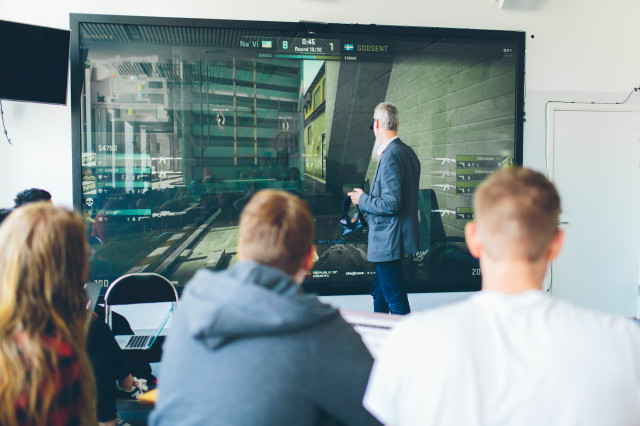Theory:
The history and basics of language technology, morphology, syntax, and semantics, vector space models, evaluation methods, the principles and methods of terminology work, machine learning, information theory and Markov models, algorithms and data structures for efficient lexicon handling.
Methods:
Morphological analysis and generation, statistical methods in corpus linguistics, parsing and generation, part-of-speech tagging, named entity recognition and probabilistic parsing, statistical lexical semantics.
Application areas:
Spelling- and grammar checking, information retrieval, word prediction for smart text entry, text clustering and text categorization, computer assisted language learning, dialogue systems, text summarization, speech technology, localization and internationalization.
The students should after the course have the knowledge to:
- Explain and use general concepts within the following levels of linguistics: morphology, syntax, semantics, discourse, and pragmatics.
- Use the knowledge about morphology, syntax, and lexical semantics in order to develop systems, and explain existing systems using these levels.
- Clarify the differences between analysis, generation, and filtering in text-based systems.
- Use general language technology tools and resources, such as part-of-speech taggers, chunkers, corpora, and lexica in order to build new applications.
- Explain and use standard methods based on rules, statistics, and machine learning.
- Apply methods based on finite automata/transducers, context-free grammars, word frequencies, n-grams, co-occurrence statistics, Markov models, and vector space models.
- Analyze and explain which problems within language technology that could be solved with usable results, and which could not be solved.
- Give details of how spelling- and grammar checkers, taggers based on machine learning, stemmers, and an algorithm for semantic content acquisition work.
- Design and carry out a simpler evaluation of a language technology system, and interpret the results.
- Independently solve a well-defined practical language technology problem, or analyze a problem theoretically.
To be able to:
- Work for a language technology company.
- Continue with studies in language technology.
- Work with a master’s project in computer science or human-computer interaction with a focus on language technology.
- Be an important link between systems designers, programmers, and interaction designers in industry as well as in research projects.
